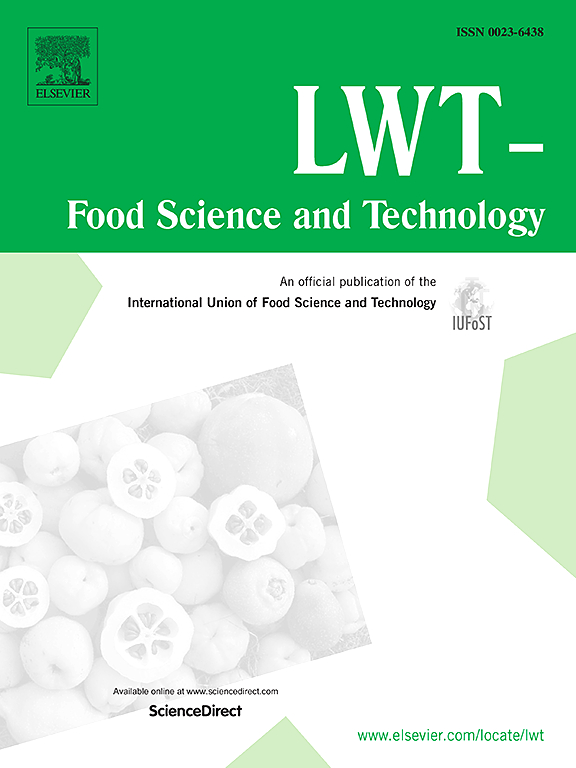Development and application of a molecular beacon-based recombinase-aided amplification method for multiplex detection of Staphylococcus aureus and aminoglycoside resistance genes
IF 6
1区 农林科学
Q1 FOOD SCIENCE & TECHNOLOGY
引用次数: 0
Abstract
Staphylococcus aureus and its drug resistance in bovine mastitis pose a significant threat to raw milk biosafety. Three sets of primers and improved molecular beacon (IMB) probes were designed for fluorescence quantitative recombinase-aided amplification (IMB-RAA) method using the gyrB, aac(6′)-aph(2′′) and ant(4′)-Ia genes of S. aureus. The specificity of primers (IBMs) was shown species specificity for S. aureus, and the phenotypes were gentamicin and kanamycin resistance, respectively. The detection limits for positive plasmid DNA and artificially contaminated skim milk were 1.6 × 102 and 1.8 × 102 copies/μL, respectively, achieved within 20 min. The linear correlation coefficients for the three standard curves exceeded 0.99, with amplification efficiencies ranging between 90 % and 110 %. The triple detection system demonstrated strong repeatability. 160 milk samples were detected using the IMB-RAA method, with 33.13 % identified as S. aureus, achieving a consistency rate of 98.13 % with the GB4789.10–2016 standard. Gentamicin and kanamycin resistance genes were detected in 8 and 10 strains, respectively, with 100 % consistency with the observed antibiotic resistance phenotypes. Therefore, IMB-RAA offers a specific, sensitive, rapid, and convenient approach for the early diagnosis of bovine mastitis caused by S. aureus and for ensuring raw milk biosafety.
求助全文
约1分钟内获得全文
求助全文
来源期刊

LWT - Food Science and Technology
工程技术-食品科技
CiteScore
11.80
自引率
6.70%
发文量
1724
审稿时长
65 days
期刊介绍:
LWT - Food Science and Technology is an international journal that publishes innovative papers in the fields of food chemistry, biochemistry, microbiology, technology and nutrition. The work described should be innovative either in the approach or in the methods used. The significance of the results either for the science community or for the food industry must also be specified. Contributions written in English are welcomed in the form of review articles, short reviews, research papers, and research notes. Papers featuring animal trials and cell cultures are outside the scope of the journal and will not be considered for publication.
 求助内容:
求助内容: 应助结果提醒方式:
应助结果提醒方式:


